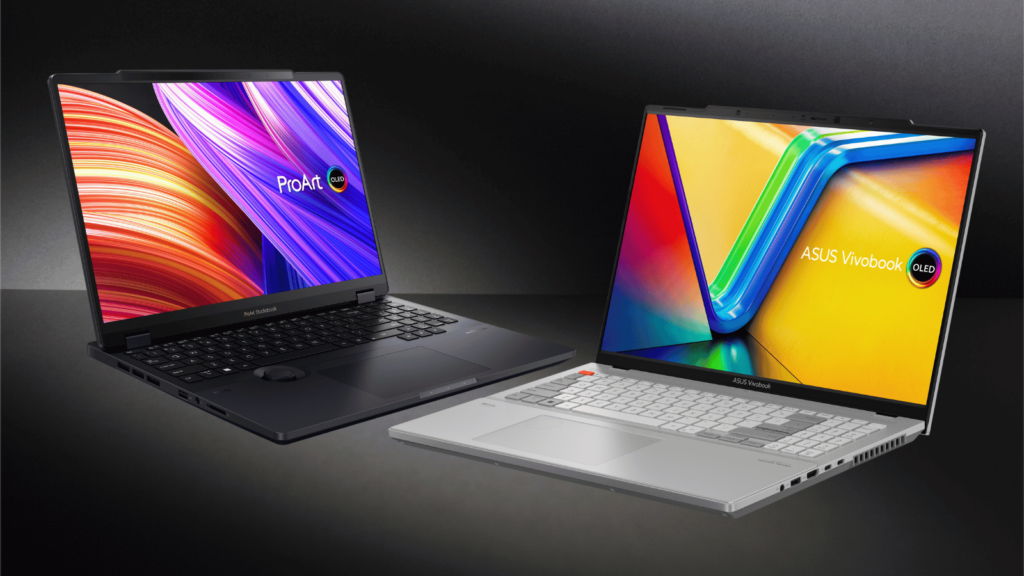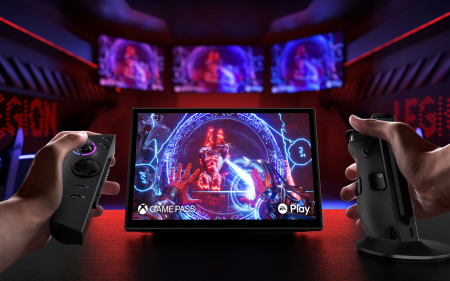Yes, you read that right. No, you haven’t gone back in time to when 3D tech was all the rage. This year at the CES, Asus announced its intention to bring glasses-free 3D tech to its laptops. It isn’t the first to do so, as much as it would like to claim. Acer did it first nearly a year ago.
The difference here is that Asus is doing it with its gorgeous OLED displays whereas Acer could only manage it with LCD displays. So the “world’s first” tag is still technically correct.
Asus is bringing its new Spatial Vision 3D tech to two of its creator laptops, the ProArt Studiobook 16 3D OLED and the Vivobook Pro 16X 3D OLED.
Asus brings 3D to your eyeballs
Asus’ glasses-free (autostereoscopic) 3D OLED technology works in a similar way to Acer’s SpatialLabs tech. It uses a lenticular lens and “advanced eye-tracking camera technology” to add depth to 2D content.
You might not have heard of a lenticular lens before but you’ve almost certainly seen it in action. Remember those ‘3D’ Pokémon tazos where the picture looked like it was moving as you changed your viewing angle? Asus is doing that with its OLED displays but on a software level and with eye-tracking technology.
Human eyes view things (like a display) from slightly different angles. Well, that’s the case for most people. By tracking where each eye is looking, Asus Spatial Vision can “weave distinct images for each eye” meaning when enabled, your eyes are each looking at a different set of pixels resulting in a 3D image. Or so the company claims. You’re also able to switch the new tech off when the extra dimension isn’t needed.
 It’s not only a fancy screen you have to look forward to — though we’d love a chance to try before we buy. The spec sheets of the pair of 3D-enabled notebooks are pretty impressive. In both the ProArt Studiobook 16 3D OLED and Vivobook Pro 16X 3D OLED, you can expect the same 16in 3.2K 120Hz 3D OLED display, and the option of up to Intel’s new 24-core i9-13980HX processor and Nvidia’s RTX4070 GPU. The machines ship with 32GB and 16GB of DDR5 RAM respectively.
It’s not only a fancy screen you have to look forward to — though we’d love a chance to try before we buy. The spec sheets of the pair of 3D-enabled notebooks are pretty impressive. In both the ProArt Studiobook 16 3D OLED and Vivobook Pro 16X 3D OLED, you can expect the same 16in 3.2K 120Hz 3D OLED display, and the option of up to Intel’s new 24-core i9-13980HX processor and Nvidia’s RTX4070 GPU. The machines ship with 32GB and 16GB of DDR5 RAM respectively.
The major differences seem to be in the chassis and the interfaces. There should also be slightly lower-spec machines so you don’t need to sell a kidney to afford one. We’re guessing. Pricing and availability aren’t yet known but you can be sure that when we get our hands on them, you’ll know about it.
Asus didn’t only announce its glasses-free 3D capable laptops. You can expect refreshes to pretty much its entire range of creator, professional, and gaming laptops in the coming months. A host of new gaming peripherals including a 540Hz gaming monitor and the world’s first WiFi 7 router are also expected to launch from the brand shortly.




